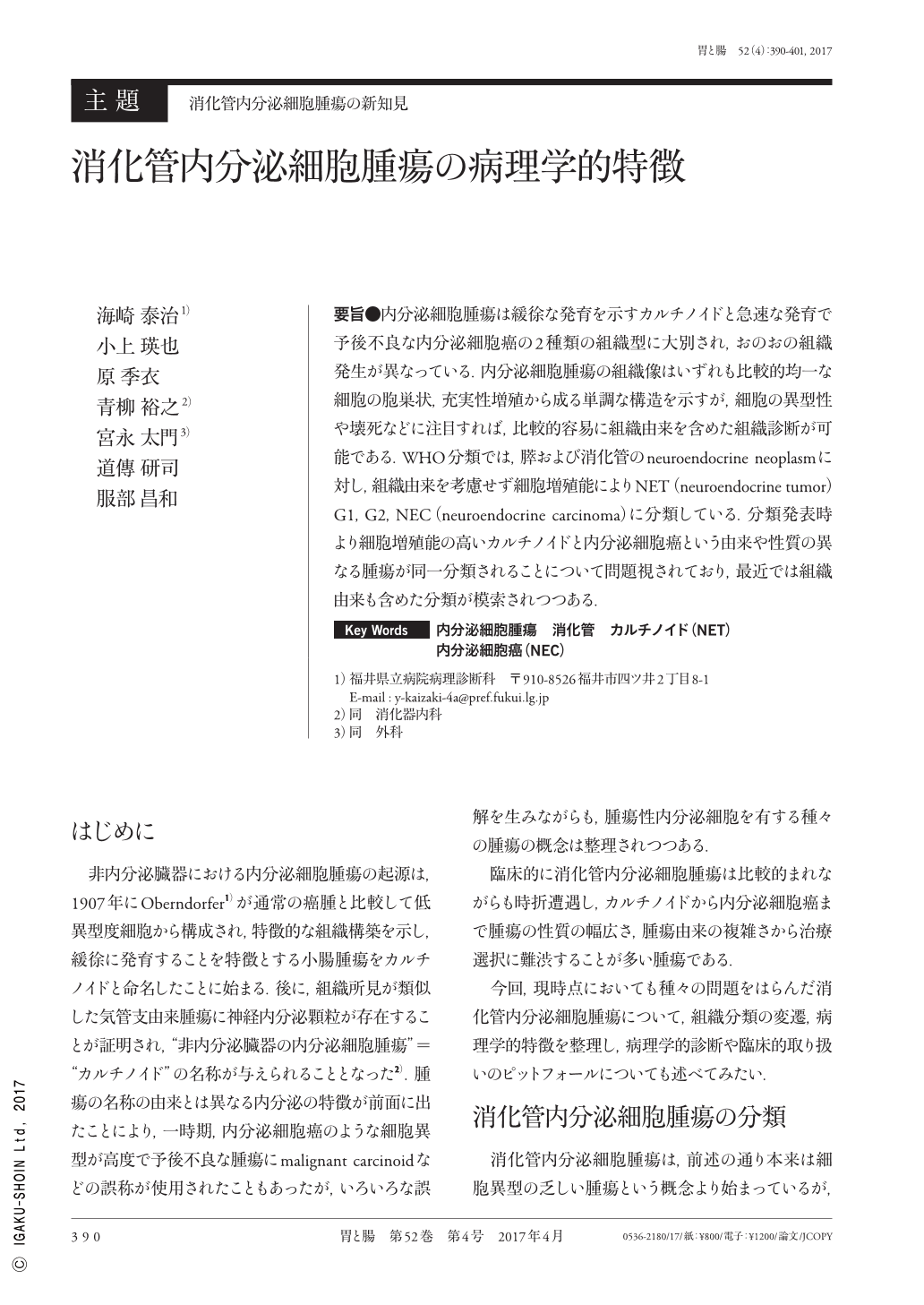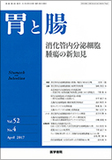Japanese
English
- 有料閲覧
- Abstract 文献概要
- 1ページ目 Look Inside
- 参考文献 Reference
- サイト内被引用 Cited by
要旨●内分泌細胞腫瘍は緩徐な発育を示すカルチノイドと急速な発育で予後不良な内分泌細胞癌の2種類の組織型に大別され,おのおの組織発生が異なっている.内分泌細胞腫瘍の組織像はいずれも比較的均一な細胞の胞巣状,充実性増殖から成る単調な構造を示すが,細胞の異型性や壊死などに注目すれば,比較的容易に組織由来を含めた組織診断が可能である.WHO分類では,膵および消化管のneuroendocrine neoplasmに対し,組織由来を考慮せず細胞増殖能によりNET(neuroendocrine tumor)G1,G2,NEC(neuroendocrine carcinoma)に分類している.分類発表時より細胞増殖能の高いカルチノイドと内分泌細胞癌という由来や性質の異なる腫瘍が同一分類されることについて問題視されており,最近では組織由来も含めた分類が模索されつつある.
Endocrine cell tumor is classified as carcinoid tumor with slow growth, and ECC(endocrine cell carcinoma)is characterized with rapid growth and poor prognosis. The mechanism of development of both these tumors is different. The histological findings of endocrine cell tumors show a monotonous structure consisting of alveolar or solid growth with relatively homogeneous cells. The presence of atypia or necrosis of cells makes it relatively easy to make a diagnosis and also gives information about tissue origin. In the WHO classification, neuroendocrine neoplasms of the pancreas and gastrointestinal tract are together classified as NET(neuroendocrine tumor)G1, NET G2, and NEC(neuroendocrine carcinoma)with cell proliferation ability, without the consideration of tissue origin. The problem that persists since the announcement of the classification is that the tumors of different origin and characteristics such as carcinoids with high cell proliferation ability and endocrine cell carcinoma are grouped under the same classification. Recently, a classification that includes tumor origin is under consideration.

Copyright © 2017, Igaku-Shoin Ltd. All rights reserved.


